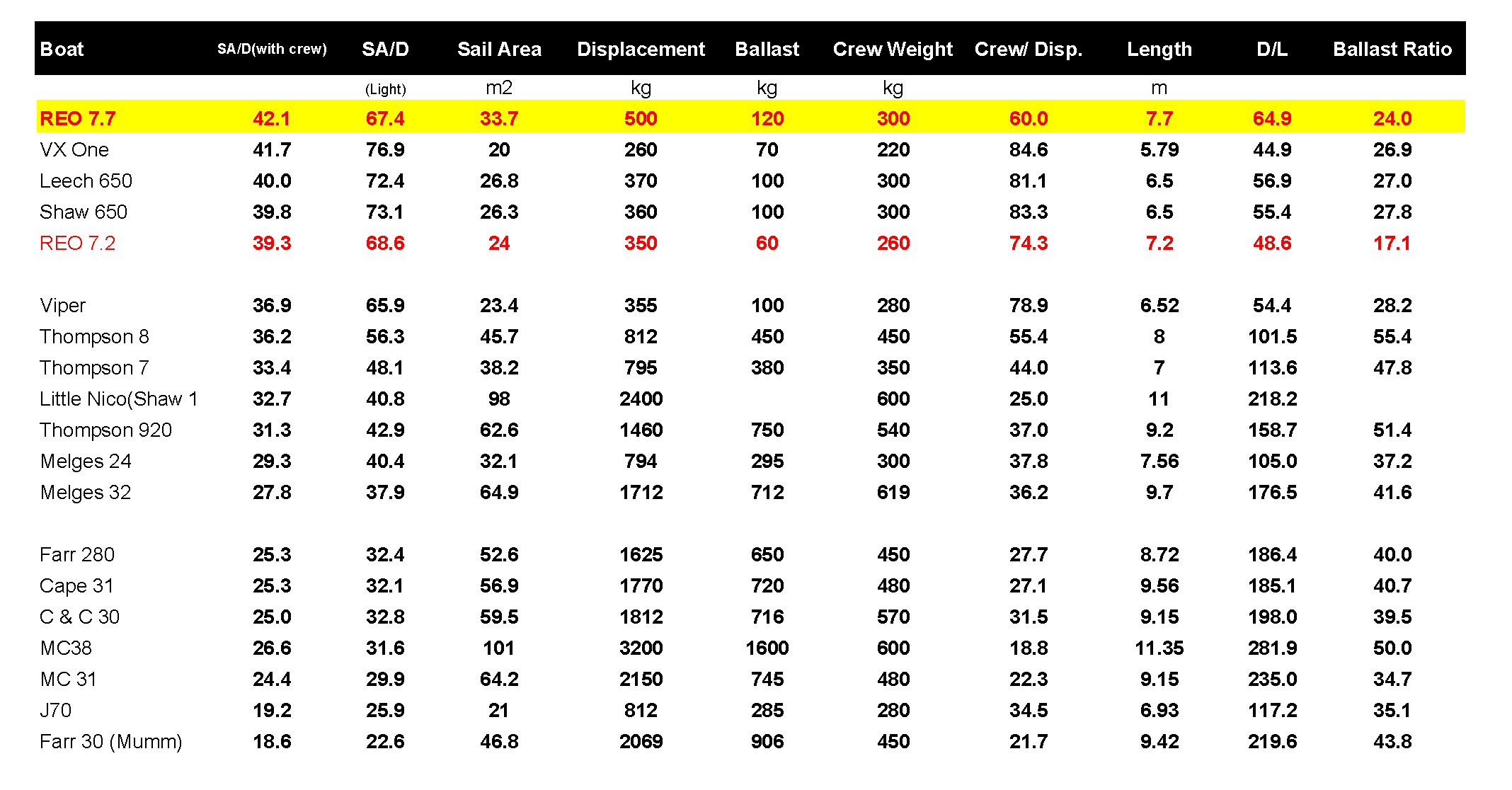Why choose REO Sportsboats?
While other designers have used Computational Fluid Dynamics and have scaled down successful mini-maxis and TP52s we just put a 24 foot prototype on the water and knocked off all the other sporty boats, old and new that were 30 foot or so in length!
You don’t need half the neighbourhood on board. While the other boats have clouds of sail and at least half a tonne of lead, three or four crew will be enough to keep the REO on her feet and cruising past all of the others. Check out the videos to see how quick and stable she is in a breeze!
Other yacht designers pack as much sail area (horsepower) on their boats as possible make them out of carbon (nice) but then weigh them down with lead and the need to pack a crew of 6 or more onboard for ballast! This delivers a heavy package with high windage, equivalent to a truck.
REO Sportsboats have created boats with low weight, low windage and a high power to weight ratio with performance more like a sports car! With only 3 or 4 crew our boats are easy to sail and move seemlesly from displacement mode onto the plane.
Using parameters overlooked by other designers, we’ve created sports boats that not only have better performance but are easier to sail too. The long chines make the boat very stable and the light weight means that as the breeze increases she accelerates quickly and the loads on the boat and all of the sheets stay low so the speed is easy!
“Thanks again for the sail. Although I have been seeing its performance all season it was still an eye opener to sail on her” – Jim Dwyer
How does 8 knots upwind and 20 knots downwind with a crew of only three or four in a 25 footer sound?
Our boat, the REO 7.2 “REO Speedwagon” blitzed the field at the 2017 ASBA (Sports boat) Nationals and continues to beat boats up to more than 40 feet long in all conditions.
Through further innovation, we have improved again on the concept of the REO 7.2, the ASBA National Champion, to make a more potent and user friendly package in a one-design sports boat, the REO 7.7.
Our new design, REO 7.7, is engineered to ISO 12215 Category C and built with vacuum infused epoxy, foam core and carbon fibre reinforcements in the major load areas.
Wondering how we do it? We invite you to discover what makes us tick.

